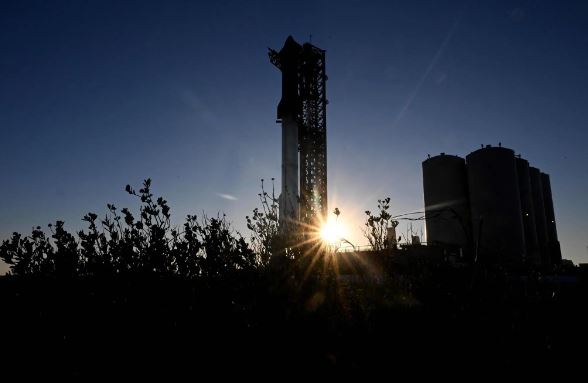SpaceX, the aerospace company founded by Elon Musk, is gearing up for the second test flight of its Starship rocket, a crucial component in NASA’s Artemis missions to the moon and Musk’s ambitions for interplanetary travel to Mars. The Federal Aviation Administration (FAA) granted regulatory approval for the launch on Wednesday.
Originally planned for Friday, the launch has been rescheduled for Saturday due to the replacement of a part on the rocket, as announced by Musk on the social network site X, formerly known as Twitter, which he owns.
The launch site is located in Boca Chica, Texas, a region SpaceX has dubbed Starbase. The scheduled launch time is 8 a.m. Eastern time on Saturday, with a 20-minute window available for liftoff. SpaceX will provide a live stream of the launch on X.
If the test flight proves successful, Starship will undertake a partial trip around the Earth before executing a controlled descent into the Pacific Ocean off the coast of Kauai.
Starship plays a pivotal role in NASA’s plans as the future moon lander for Artemis astronauts. However, for Musk, it is a crucial element in his vision of establishing human colonies on Mars, necessitating the development of an exceptionally large and powerful rocket.
When combined with SpaceX’s Super Heavy booster, Starship becomes the tallest rocket ever built, standing at 394 feet—nearly 90 feet taller than the Statue of Liberty, including its pedestal. The design emphasizes reusability, with both the Super Heavy booster and Starship intended to land for future use.
The first test flight of Starship in April encountered challenges, notably with three of the booster’s 33 engines failing to start, resulting in an unbalanced thrust and a leaning ascent. While the launch seemed initially successful, signs of engine failure became apparent, leading to the rocket’s tumbling and eventual destruction.
Elon Musk later provided preliminary explanations on Twitter (now X), acknowledging some positive aspects, including the vehicle’s structural resilience exceeding expectations. The upcoming launch incorporates modifications such as “hot firing,” igniting Starship’s upper-stage engines while the booster is still attached, aiming to enhance performance.
SpaceX has also addressed issues related to fuel leaks, fires, and improvements to the flight termination system, which ensures the timely destruction of a rocket if it deviates off course.
To minimize damage to the launchpad caused by rocket engines, SpaceX has implemented a new structure resembling a “massive, super strong steel shower head” to absorb the heat and force, protecting the concrete and steel below.
The success of Starship is vital for SpaceX’s continued progress in space exploration, serving both governmental and private initiatives. The ongoing testing and refinement of this groundbreaking rocket represent a significant step toward achieving the ambitious goals set by Elon Musk for human space travel and colonization of other planets.

